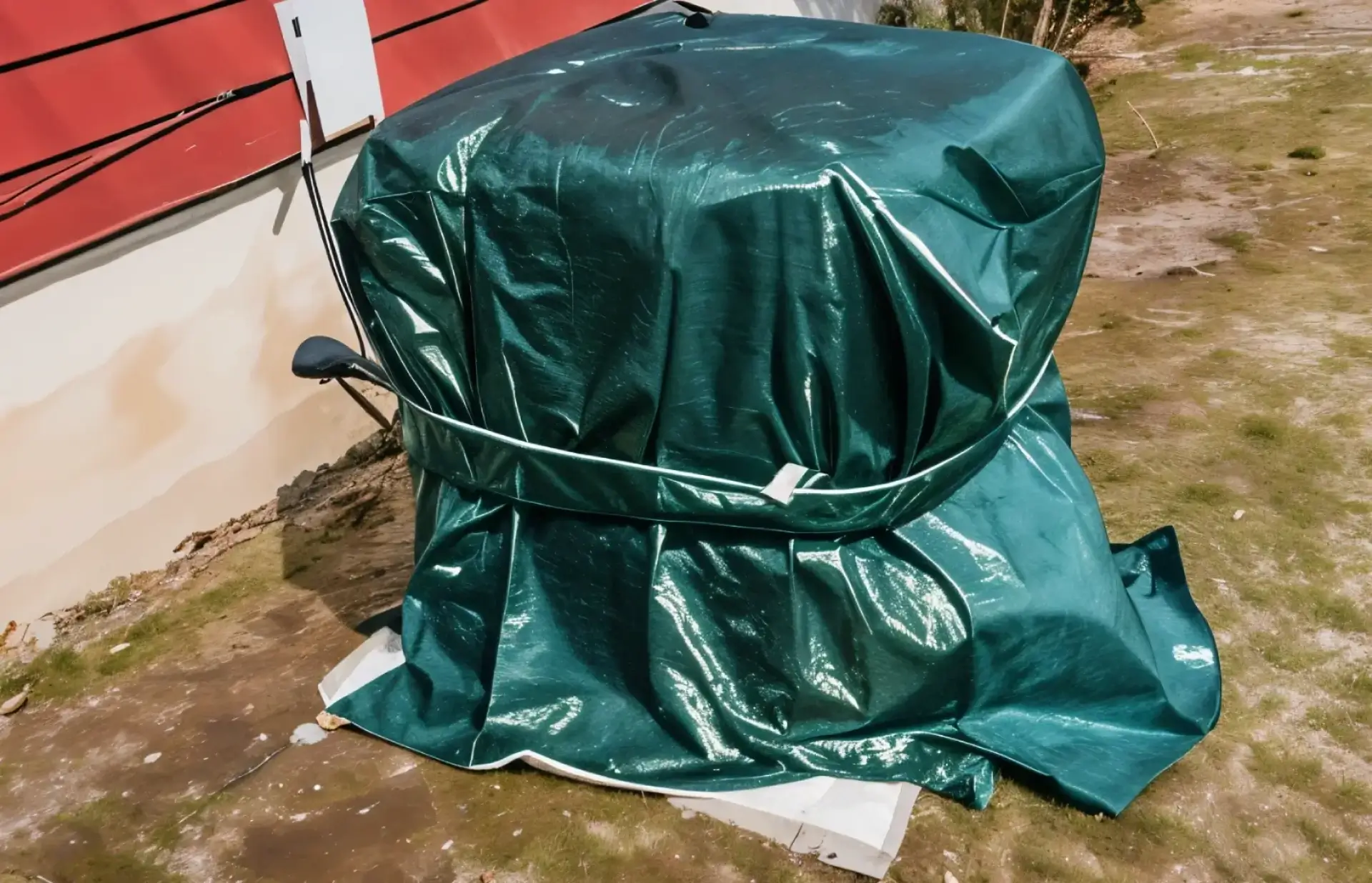Most of the time, No — you don’t need to cover your AC unit in winter. Modern air conditioners are built to handle snow, rain, and cold weather. In fact, fully covering your unit can trap moisture and create more damage than leaving it uncovered. Still, there are some situations where partial protection makes sense, and we’ll explore those below.
Why Homeowners Think About Covering Their AC
It feels logical: we cover patio furniture, lawnmowers, and grills during the off-season, so why not the air conditioner? Many homeowners worry about:
- Snow and ice damaging the coils
- Falling leaves or debris clogging the unit
- Rodents or insects nesting inside during cold months
- Moisture and dust buildup
The concern makes sense, but covering an AC unit isn’t always the solution.
Why Covering Your AC Can Do More Harm Than Good
Air conditioners are designed to stay outdoors. A full, airtight cover can actually create bigger problems:
- Moisture and condensation trapped water leads to rust and corrosion
- Mold and mildew growth due to lack of airflow
- Rodent nesting inside a warm, dark cover
- Frozen coils if water collects under the cover and temperatures drop
- Warranty issues if the manufacturer discourages covering
In other words: A cover often creates the very damage you’re trying to avoid.
When Covering Might Actually Help
There are a few exceptions where adding protection makes sense:
- Units under trees where leaves, seeds, or branches may fall inside
- Regions with heavy snowfall or ice storms that can build up on the unit
- Specific manufacturer recommendations (some brands sell custom top covers)
In these cases, you don’t need a full wrap. Protecting the top only is usually enough.
Safe Alternatives to Full AC Covers
If you feel more comfortable adding protection, choose options that allow airflow:
- Plywood board secured on top of the unit to block debris and ice
- Breathable/lightweight cover that won’t trap water or humidity
- Awning or shade structure that prevents direct accumulation of snow and ice
- Custom top protectors from your AC’s manufacturer, designed for safe use
The key is to cover only what’s necessary while allowing the sides to stay open.
Winter Care Tips That Work Better Than Covers
Instead of covering, focus on simple winter maintenance that keeps your system safe and efficient:
- Clear debris like leaves, branches, and dirt around the outdoor unit
- Keep at least 2–3 feet of clearance around the AC for airflow
- Inspect the unit before and after winter storms
- Schedule a seasonal maintenance check with a trusted HVAC professional
- Replace or clean air filters as recommended
These steps protect your unit without creating moisture and airflow problems.
Expert Advice: What HVAC Pros Recommend
Most HVAC technicians and manufacturers agree: outdoor AC units are built to withstand the elements. They use weather-resistant metals, protective coatings, and sealed electronics. Unless your HVAC professional specifically suggests a cover for your location, your best option is maintenance, not wrapping.
The Final Verdict: Cover or Not?
For most homeowners, the answer is simple: don’t cover your air conditioner in winter.
- If you must cover it, only protect the top, not the entire unit.
- Always choose breathable materials instead of airtight plastic.
- Prioritize cleaning and seasonal maintenance over covers.
Your AC was designed to “weather the weather.” Give it proper care, and it will be ready to keep you cool when spring and summer return.
Ready to Protect Your AC the Right Way?
Want peace of mind this winter? Schedule a professional ac maintenance check to make sure your HVAC system is clean, safe, and prepared for the next season. A little care now can save you expensive repairs later.









